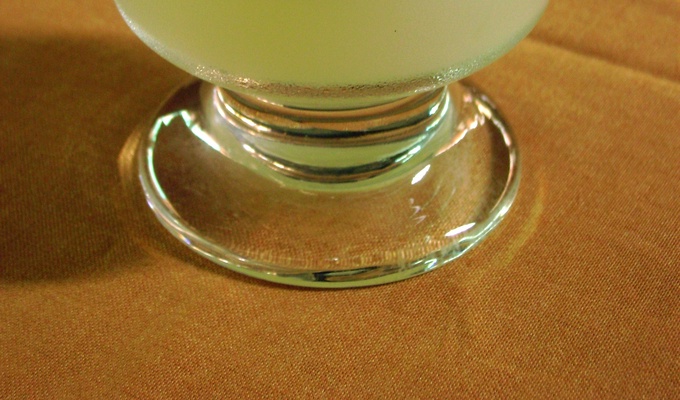A pisco sour is an alcoholic cocktail of Peruvian origin that is typical of Peruvian cuisine. The drink's name comes from pisco, which is its base liquor, and the cocktail term sour, in reference to sour citrus juice and sweetener components. The Peruvian pisco sour uses Peruvian pisco as the base liquor and adds freshly squeezed lemon juice, simple syrup, ice, egg white, and Angostura Bitters. The Chilean version is similar, but uses Chilean pisco and Pica lime, and excludes the bitters and egg white. Other variants of the cocktail include those created with fruits like pineapple or plants such as coca leaves.
Although the preparation of pisco-based mixed beverages possibly dates back to the 1700s, historians and drink experts agree that the cocktail as it is known today was invented in the early 1920s in Lima, the capital of Peru, by the American bartender Victor Vaughen Morris. Morris left the United States in 1903 to work in Cerro de Pasco, a city in central Peru. In 1916, he opened Morris' Bar in Lima, and his saloon quickly became a popular spot for the Peruvian upper class and English-speaking foreigners. The oldest known mentions of the pisco sour are found in newspaper and magazine advertisements, dating to the early 1920s, for Morris and his bar published in Peru and Chile. The pisco sour underwent several changes until Mario Bruiget, a Peruvian bartender working at Morris' Bar, created the modern Peruvian recipe of the cocktail in the latter part of the 1920s by adding Angostura bitters and egg whites to the mix.
Cocktail connoisseurs consider the pisco sour a South American classic. Chile and Peru both claim the pisco sour as their national drink, and each asserts ownership of the cocktail's base liquor—pisco; consequently, the pisco sour has become a significant and oft-debated topic of Latin American popular culture. Media sources and celebrities commenting on the dispute often express their preference for one cocktail version over the other, sometimes just to cause controversy. Some pisco producers have noted that the controversy helps promote interest in the drink. The two kinds of pisco and the two variations in the style of preparing the pisco sour are distinct in both production and taste. Peru celebrates a yearly public holiday in honor of the cocktail during the first Saturday of February.
